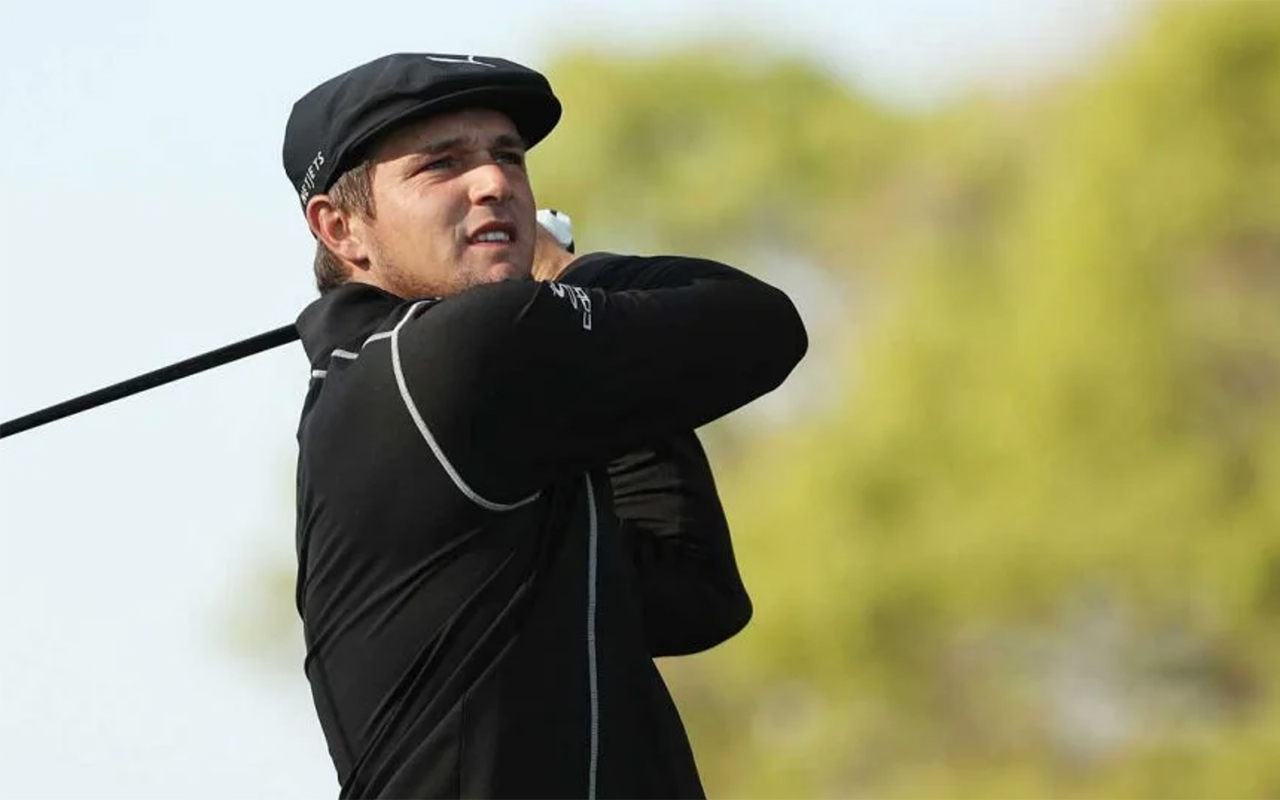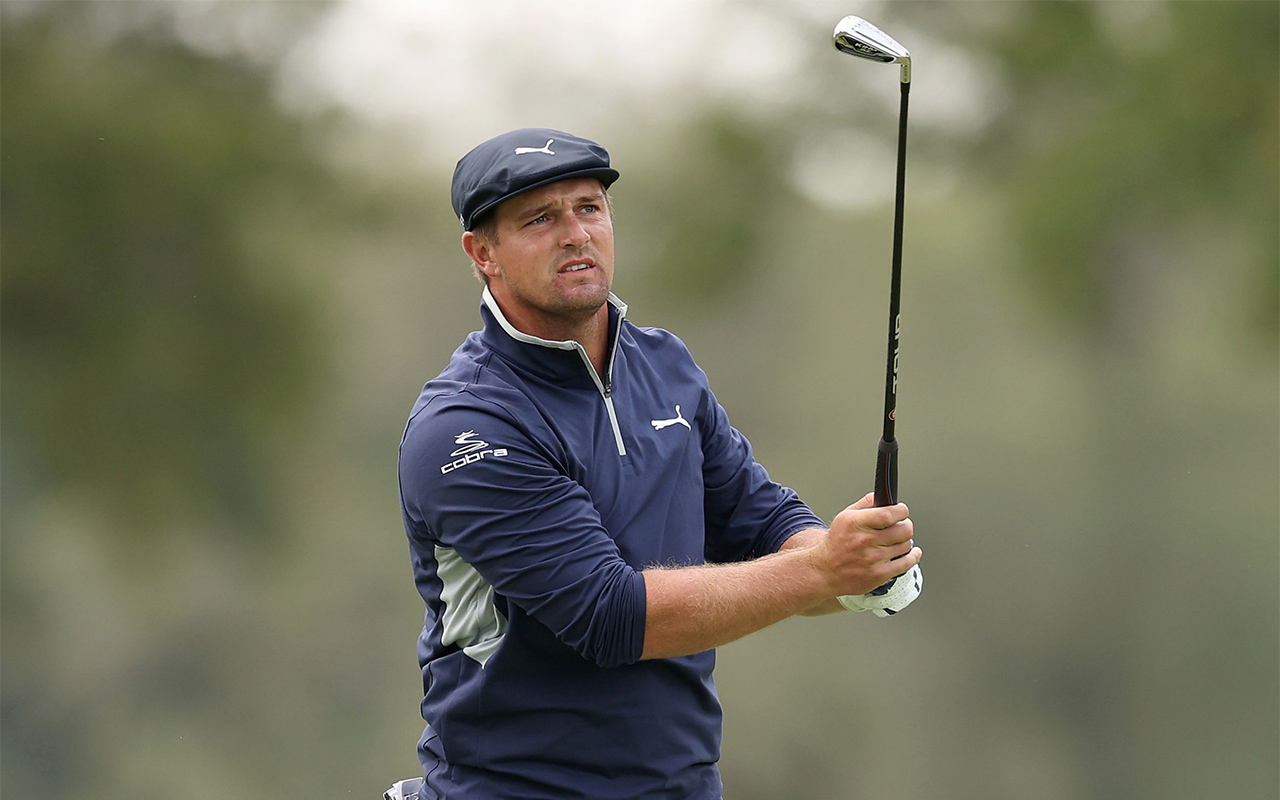“If you really want to prove who the best champion is, it’s not a long-drive contest…. It’s not supposed to be a driving contest.”
You might think that quote on the ideal skills of a champion golfer might be from some miffed Winged Foot member or disoriented USGA executive after the thicced-up Bryson DeChambeau executed his strategy of bombing his way to a dominant U.S. Open win. But it’s from Bryson himself, a little more than a year ago at another New York-area A.W. Tillinghast course.
That was when Bryson saw what Brooks Koepka had done to Bethpage Black at the 2019 PGA Championship. DeChambeau had just posted another over-par round in what, to that point, was a wholly unimpressive professional record at major championships. Always a good quote and in a moment of frustration, he placed the blame not on his own game but on the examination he had failed.
“It’s about precision,” he said, describing his ideal major to GolfChannel.com’s Will Gray. “When you start making it really tight, I get the tight part, but when you start lengthening it to the amounts that they’ve been lengthening it to, I just personally think that it’s a mess-up.”
He praised Augusta National, where length is still an advantage, as the more comprehensive test. “That tests the best ball-striker. That’s what majors are supposed to be about. It’s not supposed to be a driving contest. You just can’t make golf courses that long with guys on the lower end of the stick driving it 275, 280, 290 and then hitting hybrids into greens.”
A year later, his frustration about major setups seemed long forgotten as the new mass-matician version of Bryson bomb-and-gouged his way to a U.S. Open title at a Tillinghast design with stout par-4s and high rough (albeit very different greens).
Some have speculated that his decision to bulk up was also a response to Koepka getting in his grill on the Liberty National putting green last fall, when Bryson’s unchecked pace of play consumed the PGA Tour’s first playoff event. There may not be a Brooks vs. Bryson rivalry yet, but there is tension and dislike. That is real. Bryson takes a shot at Brooks’s abs. Brooks sends not-so-cryptic tweets about steroids. There’s an infantile macho conflict between the two that likely added to Bryson’s drive.
But the origins of that drive are mostly in the golf, especially in that recognition of how Brooks tamed Bethpage. So it was unsurprising to hear him refer to that moment again this week in a pre-championship press conference. He was asked about his thiccness and how it would help him this week.
“I can swing it faster and get through a lot more grass,” he said. “That’s personally where I feel like it’s been a tremendous advantage. For example, Brooks and what he was able to do at Bethpage Black. He just obliterated the golf course with his strength, and that’s something that I admired and wanted to try to model myself after to try to do what he did.”
Bryson’s strength helps him not only mash it 370 yards to wedge distances but also muscle it out when he invariably finds the rough. He saw this strategy succeed at last year’s PGA Championship and decided to take it to the extreme, to do it better—and bigger—than anyone else.
-

Bryson DeChambeau at the 2019 PGA Championship
-

Bryson DeChambeau at the 2020 U.S. Open
His colleagues have tracked his exploits all summer with a mix of awe and what now seems to be approaching concern. Bryson’s progress may even force tour pros, who have made millions playing a version of this style, to acknowledge out loud that there might be a problem with the modern game.
Xander Schauffele, who has become an excellent performer in U.S. Opens and majors early in his career, said Sunday night that while all the greats have had distance in their bag, Bryson’s approach was “exposing our game” rather than revolutionizing it. Rory McIlroy had an “I’m not saying, I’m just saying” response to the Bryson Revolution question as well:
“I think he’s taken advantage of where the game is at the minute…. Look, again, whether that’s good or bad, but it’s just the way it is. I’m not saying that’s right or wrong. He’s just taking advantage of what we have right now.”
This seems to be the context in which Bryson’s U.S. Open win will be viewed and discussed. It will be used primarily as a rope in the distance tug-of-war. Although we’re praising him for winning, we’re focusing more on how he did it, and how different it looked from when Hale Irwin and Geoff Ogilvy won at Winged Foot. And that’s not completely fair.
Every U.S. Open win is earned, regardless of era or style of play. It may not happen the way you like or on a setup you like or with the winning score you like. But every major winner combines supreme talent with hard work—and this shouldn’t be a revelatory statement. Bryson had that talent; he wouldn’t have won the U.S. Amateur, the NCAA individual title, and several professional events without it. Then he saw Brooks at Bethpage and put in a new kind of work to transform himself into a more effective competitor at the game’s most important events.
The mass is a perceptible, in-the-thicc-flesh exhibit of the hard work. It’s not the “I’ve been grinding all day on the range back home” kind of work. You can see it, right there in front of you. But he did the more common, less perceptible work as well. When he went around Winged Foot with Phil Mickelson in a practice round, Phil told him he succeeded there in 2006 because of a fabulous short game. So Bryson changed his practice routine and concentrated on his short-game shots from different lies and angles. He leaned on those shots throughout the weekend, finishing second in Strokes Gained: Around-the-Green for the championship.
When his driver got loose on him, Bryson went and practiced that in the dark on Saturday night. On Sunday, he was seventh in Strokes Gained: Off-the-Tee in what should go down as one of the great final rounds in major championship history. The work was done to “become massive” over many months and it was done in finer, less perceptible detail this week.
There is a lot of nonsense surrounding Bryson, some of which comes from his own mouth and some of which is hyperbolically heaped on him during broadcasts. There’s so much to be skeptical of with the Bryson narrative and mythology. You can be skeptical of his actual grasp of physics. You can be skeptical of his grasp of social media. You can be skeptical of his grasp of reality! But the work is the work. You have to respect it.
That work may be as simple as lifting a protein shake off the counter and guzzling it in a matter of seconds, and repeating that action eight times a day for months. Or it may be as risky and difficult as reconstructing his body in the middle of an already successful career. That took stones and a level of work that many would not abide.
Bryson may dress things up with ridiculous phrases like “air sensitivity,” and he may strain to crowbar in some technical vocabulary and “you just wouldn’t understand” asides. These embellishments consume the oxygen of broadcasts and the ink on the page and overcomplicate the fact that he’s just a supreme talent who busts his ass to get better.
On Sunday night, Bryson said a U.S. Open win was something he’d been working toward all his life. That’s true, but more specifically, this win was something he’d been working toward since last year, when he saw Brooks doing what he hadn’t been able to do at the majors. Bryson didn’t so much start a revolution, which is how his beefed-up summer of smashing has often been framed, as simply recognize what was working best and make an effort, perhaps an extreme one, to do it even better. He transformed himself, but he’s not necessarily transforming the game. He’s just making what was already true more conspicuous.


 by
by 
